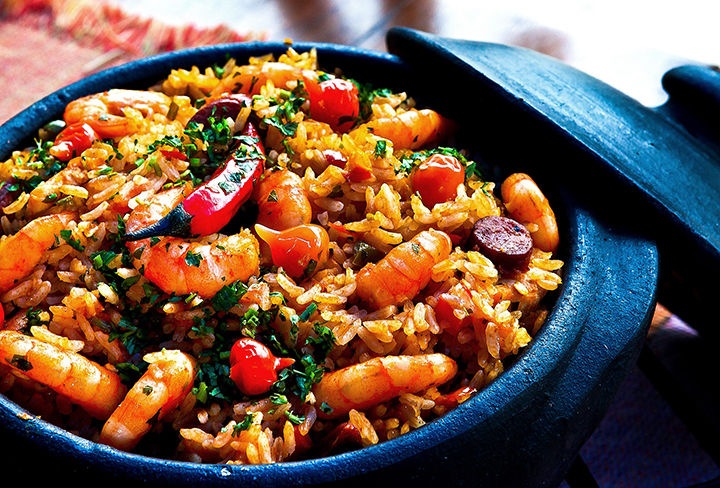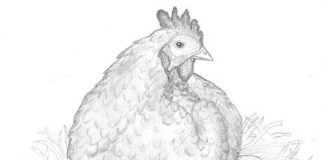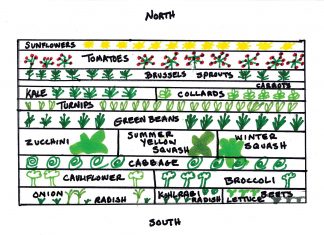| Issue #100 • July/August, 2006 |
The Surgeon General of the United States recently referred to obesity as “the terror within.” But who is the enemy? When we finally started paying attention to what health advocates were saying about the perils of smoking, it was easy to label the tobacco industry as a dangerous and evil assassin of innocent people. However, despite the mushrooming evidence that the regular consumption of many foods marketed at restaurants and supermarkets is the root cause of a variety of serious health problems, from heart attacks to cancer, most Americans find it difficult to label the food industry and its purveyors as evil. Instead, we blame our lack of exercise and willpower for the increase in food-related problems like obesity, diabetes, and heart disease.
Carefully controlled scientific studies show that diet-related problems are real and on the increase. But, increasing the amount of exercise we do and adopting a restricted diet regimen have not made these problems go away. Why? My personal battles against smoking cigarettes and trying to reduce food-induced high cholesterol will give you a glimpse of the reason.
|
|
I stopped smoking 20 years ago. It was difficult, but I got used to it, and today I can’t tolerate even the smell of tobacco smoke. However, I also stopped eating fried clams, one of my favorite foods, 15 years ago to reduce my high cholesterol level. While eating lunch with friends and family at a seafood restaurant a few weeks ago, I found myself staring in envy at a platter of fried clams being delivered to another table. Food, even food that can potentially cause problems with your health, is hard to hate. The answer to solving the food-related problems that this society is experiencing will not be solved by avoiding food like it is an enemy.
Instead, we have to approach the foods we eat with knowledge. What’s good for our health, and what’s bad? Not only that, we need to guard against eating too much food.
Let’s look at the obvious first: If we eat too much food, even if it’s all healthy food, we’re going to gain weight. And excess weight is associated with a variety of health problems, especially heart problems, the number one killer in America.
Food abundance clashes with our ancient genes
America is the land of plenty, for sure, and that is especially true when it comes to the production of food. We produce far more food than our population can eat. Every time we visit a supermarket, we are surrounded by this abundance. The aisles are overflowing with everything from fresh produce to highly processed foods.
This abundance, unfortunately, is in stark conflict with what humans have become used to for most of the last 40,000 years. As modern humans, we have inherited the efficiency of our Paleolithic genes. When our early ancestors planned a meal, it involved a lot more than a trip to the nearest supermarket. They routinely traveled long distances tracking wild and dangerous creatures, expended enormous physical energy killing their prey, then expended even more energy hauling their kill back home to feed others who were not able to join the hunt. With the odds for success stacked against them, the hunt often failed; when that happened, everyone often went hungry.
In the meantime, those who could not join the hunt also labored constantly to find food by foraging for nuts, fruits, berries, vegetables, and roots. Like the hunt, the effort was extreme, and the amount of calories burned in that effort was high.
Back then, obesity was likely not to have been a problem. An unreliable food supply and vigorous physical activity were key factors in preventing unhealthy weight gain.
More than likely, our ancestors were also nomads, and as seasons changed and food sources dwindled, they migrated in search of sustenance. Their travels often rewarded them with many varieties of fruits, nuts, vegetables, and game. Their receptivity to new foods added great variety to their diet and enhanced their ability to survive in changing environments.
|
Scientists guess that the Paleolithic diet our ancestors ate was about 30% protein, 50% carbohydrates, and 20% fat, an eating pattern that is very close to many of the healthy food diets of today.
Our ancestors also evolved with what are now called “thrifty genes,” genes that helped them survive in their uncertain world. When times were good and food was plentiful, these genes helped their bodies maximize the usable energy from the food by allowing them to store excess food as body fat. During the lean periods, their bodies shifted into survival mode and began converting the stored fats into usable calories. This reserved energy kept them going until food was available again.
Over the past 40,000 years, human DNA has changed very little. We are still genetically linked to our primitive forebears. We not only still have these “thrifty genes,” but our basic genetic structure is designed for eating plants, living in caves, and running around mostly naked. It has only been during the past few decades that our genes have been forced to work out all of the intricate details of how to metabolize a McDonald’s Big and Tasty, a Pizza Hut Stuffed Crust Pizza, or a Starbuck’s Grande Mocha, not to mention the incredible variety of processed foods on our supermarket shelves.
Our ancient genes and modern environment have really collided in a way that has caused us many health problems. We have used developments in agriculture, animal husbandry, mechanics, engineering, and science to produce a consistent and reliable food supply, to improve transportation of that food supply to our kitchen tables, and to make our daily job of preparing it easier. Our ancient genes are telling us to eat plenty while there’s plenty of food available, but our modern society has eliminated the physical activity of obtaining that food. No wonder we’re fat.
Portion sizes are also excessive in most restaurants as well as those suggested on the packages of many processed foods found on supermarket shelves.
For instance, the USDA Food Guide Pyramid recommends a diet that contains a maximum of 2,800 calories for a teen-age boy, active man, and very active woman. The animal protein recommendation for this diet is a maximum of seven ounces of meat, fish, or poultry daily. If we eat meat at both lunch and dinner, we must limit our portion size to 3-½ ounces per meal. How many restaurants offer a 3 or 4-ounce steak on their menu? Their customers would laugh them out of business if they did.
And serious problems such as morbid obesity, Type 2 diabetes, and heart disease have, according to health care professionals, reached epidemic levels. These problems are steadily becoming global; i.e., as cultures become richer they are also becoming fatter.
Eating highly processed foods and “fast” foods
Abundance is not our only problem when it comes to eating. It’s the availability of highly processed foods and fast foods, with their overloaded levels of fat, salt, and sugar, that is a key obstacle to eating healthy.
We are also now living in a society where fast food has become one of the defining standards for what and how much food we eat. Fast food, like the many processed foods found on supermarket shelves, contains more saturated fat, salt, and sugar than food prepared at home. And it is definitely not good for your healthy heart or any other aspect of your heatlh.
Fast-food joints (with the possible exception of places like Subway, which utilize fresh vegetables and olive oil, and offer whole grain breads as an option) make it far too easy to consume foods loaded with saturated fat, salt, and sugar. The result is that we put on weight, clog our arteries, and become diseased and die long before we should.
The supermarket takes advantage of our cravings
Unless you are a food scientist, understanding (much less even pronouncing) some of the ingredients listed on the labels of supermarket foods can be a challenge. Separating which of these foods are good for you from those that are not can be daunting.
Looking back again to our inherited genes, humans have evolved with a keen sensitivity to and liking for fat, salt, and sugar in various forms. For our ancestors, this sensitivity was a key to survival. Well aware of this, the manufactured food and fast food industry have exploited these senses by dramatically increasing the fat, salt, and sugar content in the foods they produce and serve.
Our Paleolithic genes are simply not accustomed to eating large amounts of fat, salt, and sugar on a regular basis.
Learn to read the labels on the packages of food you buy from the supermarket and try to avoid most fast foods. How much fat, salt, or sugar are in these foods? Of these three, fat is the most critical, especially for your healthy heart.
There is a difference in the types of fats we eat
On the food label of most products on the supermarket shelves is a listing of the amount of total fat, saturated fat, and trans fats contained in the product. Both saturated fat and trans fat are bad to eat. They set in motion the production of cholesterol by your liver. And cholesterol, along with the bad fats, are what primarily accumulates in your coronary arteries over the years and blocks blood flow to your heart. Eventually, this blockage can lead to a heart attack.
So avoid foods with a lot of saturated fat (read the labels). Also limit the amount of red meat and milk products (whole milk, most cheeses, ice cream) you consume because they have large amounts of saturated fat. Eat fish, skinless chicken, turkey, and veal instead, and add beans, peas, or legumes to your menu; all offer amounts of protein comparable to red meat, but without the heavy dose of saturated fat.
|
Butter and lard, of course, have high amounts of saturated fats, so avoid them. Margarine is no better, as it contains high amounts of trans fat. Many of your vegetable cooking oils, such as coconut oil and palm oil, also have high amounts of saturated fats.
But there are good fats out there, fats that are actually good for your heart. They are called polyunsaturated and monounsaturated fats. Unfortunately, these fats are usually not listed on the food labels of grocery store products.
Monounsaturated fats are especially good for your heart. Examples of oils high in monounsaturated fats are olive, canola, flaxseed, and peanut oils. Extra virgin olive oil makes a fine cooking oil. Also high in monounsaturated fats are many nuts, such as pistachios, cashews, pecans, hazel nuts, filberts, macadamia nuts, and peanuts.
Monounsaturated oils have a lot of omega-3 fatty acids, which is an important fatty acid for your heart health. Oily fish, such as tuna and salmon, are also high in omega-3 fatty acids.
It would take too much room to go into all the foods you should avoid or consume, so get yourself a copy of the excellent book, The Omega Diet. It is an easy read and is the best source I have found to explain the difference between good fats and bad fats. You can buy used copies of the book for under $5 at eBay or amazon on the internet, or go to your local bookstore where the book is always in stock.
A few healthy guidelines for cooking at home
When we prepare meals at home, we can control the ingredients, and our food can not only taste as good, but very likely better, without unnecessary amounts of fat, salt, and sugar. Here are a few healthy guidelines I follow while cooking at home:
- Don’t limit your diet to just a few familiar foods. Try to find new favorites while eating a variety of foods.
- If you don’t have a garden, consider starting one. Working in a garden burns more calories than you might think, and even a small deck garden can produce most of the fresh herbs that I suggest in many of my recipes and will cost much less than the supermarket varieties.
- Include plenty of whole-grain products, nuts, vegetables, and fruits in your diet. Many studies link these foods to lower rates of heart disease and cancers. Many fruits and vegetables contain soluble fiber, which can lower cholesterol and reduce your risk of heart disease.
- Choose the fats in your diet carefully. Minimize saturated fats and trans fats, substituting instead polyunsaturated and monounsaturated fats. Omega-3 fatty acids (contained in fish) are especially good for you.
- Moderate your use of salt. Don’t omit salt from your cooking, unless instructed to do so by your doctor, but use only the amount necessary to enhance your food. Remember, if you can taste salt in your food, you’ve added too much.
- Before you buy any processed food, get into the habit of reading the nutrition label so you can see what is really in the package.
|
My tools
For many years I have relied on a small but effective assortment of cast iron pans. These pans are more than 75 years old. Both my mother and my grandmother used these pans for most of their meal preparation. In past articles, I have suggested the use of cast iron in many recipes, and I will continue to do so. However, I have recently discovered that the world of nonstick pans has come forth as a standard in many professional kitchens, and for good reason. These pans offer non-stick convenience along with excellent cooking qualities. Some brands are very expensive, expensive enough to keep a cheapskate like me from buying them. Recently I purchased a 12-inch nonstick skillet with a silicone handle for only $40. To my surprise this pan’s stovetop performance matches that of my cast iron pans. It features a durable nonstick surface that has made it possible for me to reduce the amount of fat in my recipes by nearly 50%. (This alone is reason enough to obtain such pans.) The pan is made by Farberware and has, in a very short time, become a workhorse in my kitchen.
Another piece of equipment I have found to be indispensable is a mini food processor. These innocent looking machines make tedious jobs like emulsifying vinaigrette dressings and mincing garlic and onions easy. I purchased my first Cuisinart Mini-Prep when I first started writing for BHM. I retired it last week and replaced it with a new one for a reasonable $32.
Let’s cook
Following are some recipes featuring familiar foods but enhanced with new flavors derived from soy miso, turmeric, saffron, and a variety of custom spice blends.
All of these recipes are delicious, nutritious, and most important, healthful and heart-friendly.
Chicken vindaloo (or hot and sour chicken)
This is an updated version of a recipe that I developed for an article that I wrote on the foods of India in issue #46 (March/April 1997). This recipe truly demonstrates the versatility of Indian cooking.
The Christian minority in the former Portuguese colony of Goa makes this dish with pork, a meat that’s rarely eaten in other parts of India. In this version, I have substituted chicken for the pork, added a couple of different seasonings, and suggested serving on whole-wheat blend pasta instead of rice. This pasta is eggless and contains no cholesterol. The white Durham wheat used to make pasta is very dense and is digested more slowly than rice, which slows that insulin rush that occurs when you eat white rice of any kind. Brown rice also works well with this recipe.
Marinade ingredients:
2 Tbsp. fresh ginger, minced or grated fine
2 medium shallots, minced
2 Tbsp. dry vermouth
4 cloves fresh garlic, minced or grated fine
1 canned chipotle chili in adobo sauce, minced
3 Tbsp. malt vinegar
1 Tbsp. garam masala
1 Tbsp. chili powder
Cooking ingredients:
2 lbs. boneless and skinless chicken thighs (excess fat removed)
1-1/3 cups low sodium fat-free canned or homemade chicken stock
1 oz. tamarind pulp
2 Tbsp. peanut, grape seed, or canola oil
2 cups thinly sliced yellow onions
½ tsp. kosher salt
½ tsp. cayenne pepper
1 tsp. paprika
1-½ tsp. ground turmeric
1 12-oz. bag Ronzoni Healthy Harvest Wide Noodles
Method:
1. Combine the ginger, shallots, vermouth, garlic, chipotle pepper, and malt vinegar in a blender or small food processor. Process into a smooth paste. Add the garam masala and chili powder and pulse for a couple of seconds to combine with the other ingredients. If the marinade seems to be too thick, add a little water, one tablespoon at a time.
2. Place the chicken in a zip-lock freezer bag, and add the marinade. Carefully rub each piece of chicken with the marinade. Seal the bag, and place the chicken in the refrigerator for at least one hour.
Ingredients:
3. Place the chicken stock in a suitable-size pot and bring it to a boil over medium-high heat. Remove the stock, and add the tamarind pulp. Let the mixture soak for about 15 minutes. Strain the mixture through a strong stainless steel sieve, and then squeeze the remaining pulp to remove as much liquid as possible. Set the liquid aside, and discard the pulp.
4. Place a heavy-bottom nonstick skillet or Dutch oven over medium heat, and add one tablespoon of oil. Heat the oil until it starts to ripple, add the sliced onions and the salt. Cook the onions, stirring frequently, until they turn a light caramel brown. If the onions seem to be browning too fast, reduce the heat a little, and add a little water, one tablespoon at a time. Add the cayenne pepper, paprika, and turmeric to the onions, and continue to cook the mixture, stirring constantly, for about 20 seconds. Transfer the onion mixture to a plate and set aside.
5. Remove the chicken from the refrigerator and, using your hands, remove as much marinade from the chicken as possible and add it to the tamarind mixture.
6. Place the nonstick skillet or Dutch oven over medium-high heat. Add one tablespoon of oil, and heat until the oil starts to ripple. Add the chicken thighs, and brown them on both sides.
7. Add the tamarind mixture and the onions to the pan; bring the mixture to a boil.
|
8. Reduce the heat, cover the pan, and simmer slowly until the chicken is tender, about 30 to 45 minutes.
9. Place the covered pot in a warm oven for about 30 minutes.
10. Just before the chicken vindaloo is finished heating in the oven, prepare the pasta according to the directions. Serve the vindaloo over the pasta.
Makes 6 servings of approximately 400 calories each, 40 of which are from fat.
Sautéed fresh kale and beans with miso dressing
This recipe contains two of my favorite foods, fresh kale and white beans. Folks often pass on kale, a hardy green, for fear that it is bitter, hard to work with, and requires lengthy cooking. None of these beliefs are warranted. When fresh and young, kale cooks up both sweet and tender in just a matter of minutes. Recently, it has been marketed in measured bags, washed, stems removed, and chopped into one-inch pieces.
The main flavor ingredient in the dressing is miso. Miso is a savory, high-protein seasoning that has some of the flavor characteristics of soy sauce, but it’s sold as a paste. Miso is made by fermenting soybeans with grains like barley and rice, along with sea salt and water, for several months. There is no equivalent for miso in the West. In Japan, it is traditional to start the day with a cup of miso soup instead of coffee. Another interesting flavor we’ll use in this recipe, that can be found in the ethnic food section of most supermarkets, is mirin, a sweetened sake used in Japanese cooking. Mirin contains no fat or salt and is very low in alcohol.
When using any form of miso in a recipe, additional salt is not necessary.
Cheese miso dressing:
¼ cup white miso
2 Tbsp. natural trans fat-free peanut butter
2 Tbsp. rice vinegar
2 Tbsp. lemon juice
¼ cup water
1 Tbsp. honey
1 tsp. mirin
2 Tbsp. grated Parmesan cheese
1 Tbsp. fresh parsley, minced
½ tsp. Frank’s cayenne pepper sauce or other hot sauce
1. Combine all the ingredients in a suitably sized bowl, and mix with a wire whip. Cover the mixture; refrigerate for about one hour.
Sautéed kale:
1 Tbsp. walnut oil
1 cup onion, diced
1 cup fresh sweet red pepper, seeded and julienned
3 cloves fresh garlic, minced
¼ tsp. red pepper flakes
8 cups loosely packed fresh kale cut into one-inch pieces
½ cup low-sodium vegetable stock
1 12-oz can Great Northern beans or cannelloni beans, drained and rinsed
Method:
1. Heat the oil in a 12-inch Dutch oven (or similarly sized heavy-bottom pan) over medium-high heat, until it starts to ripple. Add the onion, and cook until it starts to brown. Add the fresh red pepper; continue to cook for another minute. Add the garlic and red pepper flakes. Continue to cook, stirring constantly, until the garlic is fragrant, about 30 seconds. Add half of the kale to the pan, using tongs. Stir the greens until they start to wilt. Add the remaining greens and the broth. Increase the heat to high until the broth starts to boil. Reduce the heat, cover, and allow the mixture to simmer until the greens are just tender, about 10 minutes.
2. Remove the pan from the heat, add the beans, and gently stir until the beans are heated.
3. Serve immediately with two tablespoons of dressing.
Makes 4 servings of approximately 175 calories each, with 10 calories from fat.
Seafood paella with brown rice
Paella is one of the world’s most famous rice dishes. I adopted this seafood version from my old fishing buddy, Howard. Howard spent his winters cooking in a variety of restaurants on Cape Cod in Massachusetts. When the weather warmed and the striped bass, bluefish, and black fish followed the tides, chasing smaller fish for dinner, Howard left the kitchen and became a market fisherman. He traveled from one end of the Cape to the other in his old Jeep chasing these game fish. He sold most of what he caught to local restaurants. But once in a while, during a lull in the fishing action, he would set up an ingenious portable kitchen on the beach and cook for the hungry fishermen around him. I was often one of those chosen few.
I’ve taken his paella recipe and increased the vegetables, reduced the salt, and substituted brown rice for the traditional white rice to make it more heart-friendly. Give it a try, and you’ll see that healthy food does not have to be boring food.
1 lb. raw 21 to 25-per-pound shrimp in the shell
1-½ cups water
½ cup dry vermouth
3-½ cups low-sodium, low-fat chicken broth
½ tsp. saffron threads, crumbled
1 bay leaf
2 tsp. olive oil
½ tsp. kosher salt
8 oz. fresh green beans, stem and ends snapped off
1 large red bell pepper, seeded and cut into 1/2-inch thick strips
3 Tbsp. olive oil
6 boneless, skinless chicken thighs
4 oz. Portuguese chourico sausage or Spanish chorizo (not Mexican chorizo which is an entirely different sausage)
2 cups medium grain brown rice
1 qt. warm water to soak the rice
|
12 littleneck or other hard-shelled clams
1 medium yellow onion, diced fine
6 cloves fresh garlic, chopped
1 tsp. Spanish paprika
1 14-1/2-ounce can diced tomatoes, drained and chopped
2 Tbsp. fresh parsley, chopped
1 lemon cut into six wedges
Method:
1. Move an oven rack to its lowest position, and preheat the oven to 450° F.
2. Carefully peel the shrimp (remove vein if necessary). Put the shrimp in a small bowl and refrigerate.
3. In a small pan, combine the shrimp shells, water, and vermouth. Bring the mixture to a boil over medium-high heat. Reduce the heat, and simmer the mixture for 15 minutes or until the liquid is reduced to one cup. Strain the mixture. Discard the shells. Add the remaining liquid to the chicken broth along with the saffron and bay leaf. Bring the broth mixture to a simmer over medium-high heat, cover the pot, and remove it from the heat.
4. In a suitable-size bowl, combine the two teaspoons of olive oil and ½ teaspoon of salt with the green beans and red peppers. Line a cookie sheet with aluminum foil, and place the coated peppers and green beans on the cookie sheet in a single layer. Place the cookie sheet in the oven, and roast the vegetables for about 10 minutes or until the green beans start to brown and show signs of wrinkling. Transfer the beans and peppers to a plate, and set them aside. Reset the oven to 350° F.
5. Lightly sprinkle the chicken with fresh-ground black pepper. Heat one tablespoon of olive oil over medium-high heat in the paella pan, 14-inch heavy-bottomed skillet, or large Dutch oven until it starts to shimmer. Add the chicken in a single layer and cook, on one side, without moving, until the chicken is medium brown, about four or five minutes. Turn the chicken and brown the other side in the same manner. Remove the chicken to a plate and set it aside
6. Add the sausage to the now empty pan and sauté until lightly browned. Set the browned sausage aside with the chicken.
7. Soak the rice in warm water for 15 minutes, drain, and set aside.
8. While the rice is soaking, place the clams in a double boiler with a half-cup of water and steam for about 5 minutes. Remove clams and set aside. Discard any that fail to open. Steam the shrimp in the same pan. Remove the shrimp, and set them aside.
9. Add two tablespoons of olive oil to your paella pan, skillet, or Dutch oven and return it to the burner over medium heat. When the oil starts to shimmer, add the diced onion and cook, stirring frequently, until the onion begins to soften. Add the garlic, paprika, and tomato. Continue cooking the vegetables until most of the water from the tomatoes has evaporated. Add the drained rice, and stir the mixture until the rice is well coated. Stir in the infused chicken broth. Raise the temperature enough to bring the mixture to a boil. Remove the pan from the heat, cover it with aluminum foil, and place it in the oven. Cook until the rice absorbs all of the liquid, about 45 minutes.
10. When the rice has cooked, remove the pan from the oven and arrange the shrimp, clams, roasted peppers and green beans on top. Cover the pan again with the foil, and place it in the oven for about five minutes to heat the added ingredients.
11. Remove the paella from the oven, sprinkle with chopped parsley. Serve with lemon wedges.
6 servings, approximately 430 calories each, with 110 calories from fat
Roasted chicken and herbed potato salad with raspberry vinaigrette
This recipe is without a doubt one of the most popular dinner salads in the Blunt household. It is a recipe loaded with vegetables and complemented with low-fat vinaigrette that I am sure will find a place on your menu. I use walnut oil in the vinaigrette instead of olive because it adds a mellow, toasted flavor to the salad that was not possible with olive oil. Nut oils are a little pricey, so use them sparingly, and keep them in the refrigerator after opening. When buying these oils, look for the term “cold pressed” or “expeller pressed” on the label. This indicates that you are buying oil that has not been treated with chemicals or exposed to high heat during the extraction process. I will discuss oils, in detail, in future articles.
Raspberry vinaigrette:
2 garlic cloves, minced
1 shallot, minced
1 tsp. fresh thyme, minced
1 tsp. fresh basil, minced
1 tsp. fresh oregano, minced
¾ tsp. Kosher salt
½ tsp. fresh-ground black pepper
1 tsp. Dijon mustard
¼ cup raspberry vinegar
1 Tbsp. rice vinegar
1/3 cup walnut oil
1/3 cup fat-free chicken broth
Salad:
1 lb. small Yukon gold or red-skin potatoes cut in quarters
Pam or other nonstick spray
6 bone-in and skin-on half chicken breasts
½ cup coarsely chopped walnuts, toasted
8 oz. mixed greens or mesclun mix
½ Vidalia onion or other sweet onion, sliced thin
½ cup grape tomatoes
Method:
1. Combine the garlic, shallot, thyme, basil, and oregano in a small food processor or blender and pulse until blended. Add the salt, pepper, mustard, and vinegars and pulse again until blended. Add the walnut oil and chicken stock. Blend until the dressing is emulsified; i.e., has a creamy texture.
2. Preheat the oven to 450° F.
3. In a small bowl, combine three tablespoons of the vinaigrette with the potatoes. Place the potatoes, in a single layer, on a nonstick cookie sheet. Roast the potatoes for about 30 minutes or until they are slightly browned and tender. Transfer the potatoes to a plate and set aside.
4. Spray a heavy-bottom skillet with Pam or other nonstick spray. Brown the chicken breasts on both sides. Transfer the browned chicken to the oven and roast until they reach an internal temperature of 155° F. Set the chicken aside to cool.
5. Place the walnuts on a cookie sheet and roast them in the oven until the are golden brown and fragrant, about 10 minutes.
6. Remove and discard the skin and bones from the chicken, and cut the meat into bite-size pieces.
Assembling the salad:
In a large bowl, combine the roasted potatoes and diced chicken. Toss this mixture with half of the remaining vinaigrette. Add the mixed greens and remainder of the dressing; gently toss the salad. Transfer the salad to a large platter and garnish with the toasted walnuts, sliced onion, and grape tomatoes.
6 servings with approximately 480 calories per serving, 100 calories from fat
Salmon burgers
My son, Jason, loves cheeseburgers. Every time we go out to eat, which is not very often, he orders a cheeseburger. We recently ate lunch in one of Cape Cod’s most popular seafood restaurants, and he seriously considered ordering his usual fare. After reviewing the menu, he looked at me with a gleam in his eye and asked, “Dad, how are the cheeseburgers here?”
|
“Awful,” I said. “You can’t get a good cheeseburger in a restaurant that features seafood.”
He sighed, reviewed the menu once more, and reluctantly ordered something else. During the two-hour ride back to Connecticut, he lamented several times about not ordering his favorite restaurant meal. After listening to this for the second time, I decided to give him my standard lecture on the dangers of saturated fat and cholesterol. I could see, in the rearview mirror, that he was trying his best not to fall asleep while I rambled on. So, I decided to take another approach.
“Look,” I said, “I can make a burger substituting fish for ground beef that is as good, and probably better, than any cheeseburger you have ever eaten.”
He said, “Okay, but if it is not as good, you will have to make me a big, fat, and juicy hamburger for dinner the next time you light up the grill.”
I agreed, and the following recipe is the result of my effort. Jason ate two of these and probably would have tried to eat a third had there been any left. He still claims that cheeseburgers are his favorite, however…
I have served these salmon burgers twice in my household and everyone, including my super-fussy daughter, Sarah, loved them.
|
Salmon burger:
2 lbs. skinless Alaska sockeye salmon fillet
1 slice fresh whole wheat bread
¼ cup egg whites (from two large eggs)
1 cup onion, diced fine
½ cup cilantro leaves, chopped
2 cloves fresh garlic, minced
1 tsp. low-sodium soy sauce
2 Tbsp. eggless light canola mayonnaise or Hellmann’s reduced fat or light mayonnaise
¼ tsp. grated nutmeg
1 5-ounce box of Old London Brand Mediterranean Melba toast
Pam
mayonnaise for coating the patties
Coating:
1 Tbsp. canola or Hellmann’s reduced fat mayonnaise for each burger to coat
Melba toast mixture
1 tsp. chili powder
Method:
1. Preheat your oven to 450° F.
2. Put the melba toast and chili powder for the coating in a freezer bag. Use a rolling pin or other object to grind up the toast while it’s in the bag. Set aside.
|
|
3. Carefully run your fingers over the salmon fillet to locate any pin bones. Remove any that you find with a pair of tweezers.
4. Chop the salmon into 1/4-inch pieces with a French knife. If you feel confident enough to perform this function with a food processor, do so, but be aware that a processor can turn seafood into a sticky paste very quickly. I speak from sad experience.
5. Chop the bread fine and combine it with the slightly beaten egg whites.
6. Combine the egg mixture with onion, cilantro, garlic, soy sauce, mayonnaise, and nutmeg. Blend this mixture with a fork.
7. Divide this mixture into six 5-ounce patties, about 3 inches in diameter.
8. Place the patties on a cookie sheet lined with parchment paper. Then place the pan into the freezer for about 20 minutes, or until the patties become firm, but not frozen.
9. When the patties are chilled and firm, remove them from the freezer. Coat one side of each patty with ½ tablespoon of mayonnaise. Spread the Melba toast mixture evenly on a cookie sheet. Press the coated side of each patty into the mixture and return the patty to the freezer pan, coated side down. Repeat this step for the other side of each patty. Return the patties to the freezer for an additional 10 minutes.
Cooking and serving:
1. Remove the patties from the freezer. Spray a cookie sheet with a quick-release spray like Pam. Place the patties on the tray and bake for about 15 to 20 minutes, until they reach an internal temperature of 160° F.
2. I usually serve these to my family with a light potato or pasta salad. I top the burger with romaine lettuce, sliced tomato, and a thick slice of sweet onion.
Approximately 380 calories per serving, 45 calories from fat.





















This is an excellent article in many ways, but I must take issue with the outdated information about fats and oils.
Avoid all industrially-processed oils. To make them profitable, petrochemical solvents are used to release more of the oil. Not all of these solvents get filtered out. The label on your oils should include one of these sets of words… extra virgin (not just virgin)… expeller-pressed.. or cold-pressed<=if so, make sure it was actually processed at a low temperature. Avoid margarine, shortening and other foods that contain processed oils, such as many salad dressings, mayo, canned soups, bakery goods and box mixes.
Lard from an organic home-grown hog is one of the healthiest fats available. However, it must be properly rendered at heat below 200F. (Freeze what you will not use up right away.) Substitute 2/3 c. of lard for 1 cup of shortening in recipes. Organic butter from an animal not fed GMO feed or other adulterated foods is very healthy, too.
Fats and oils should be used in moderation.